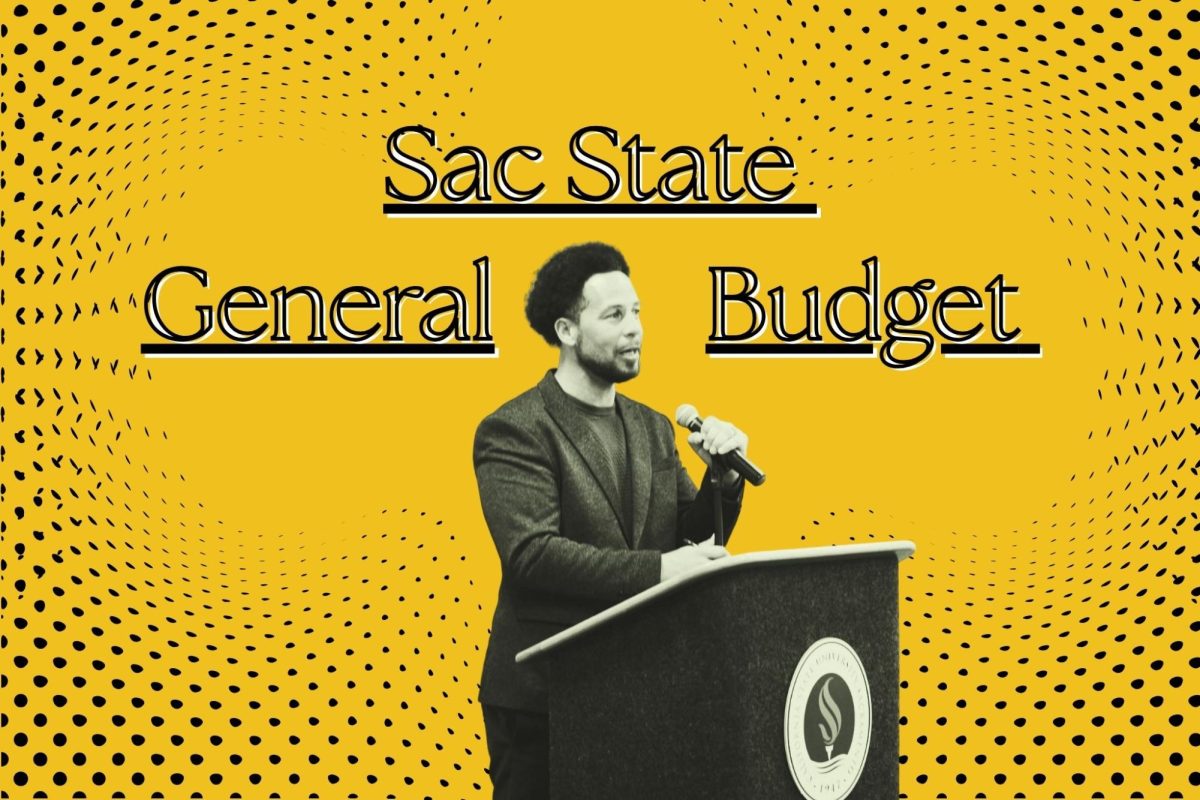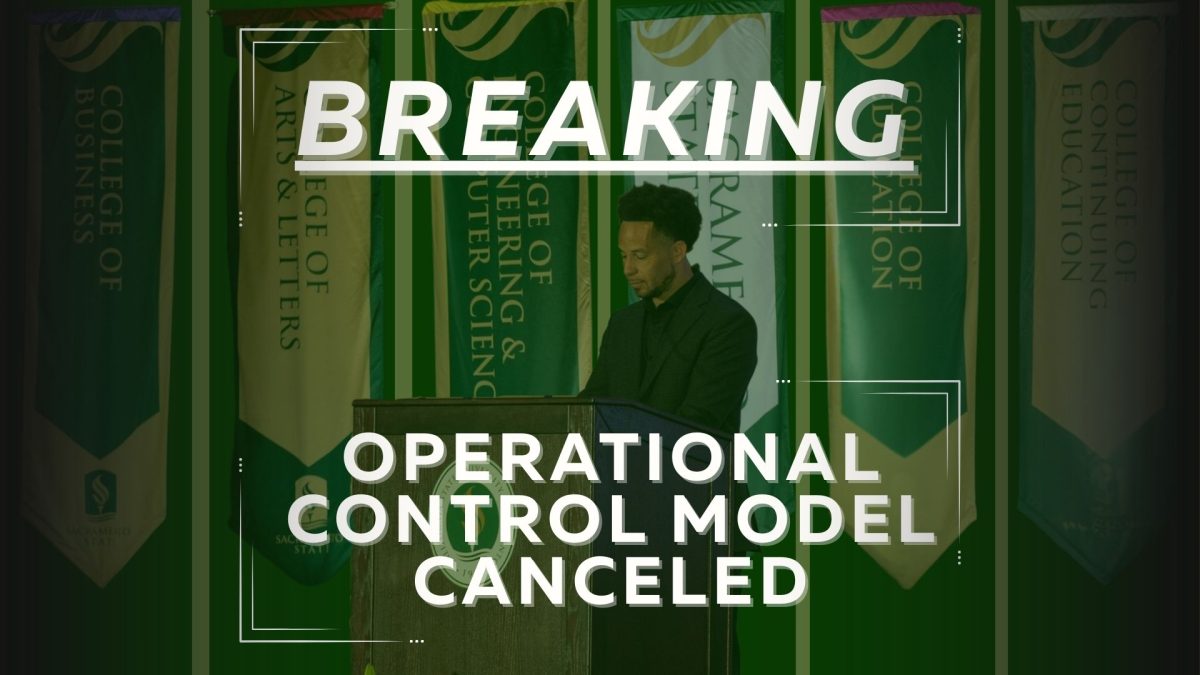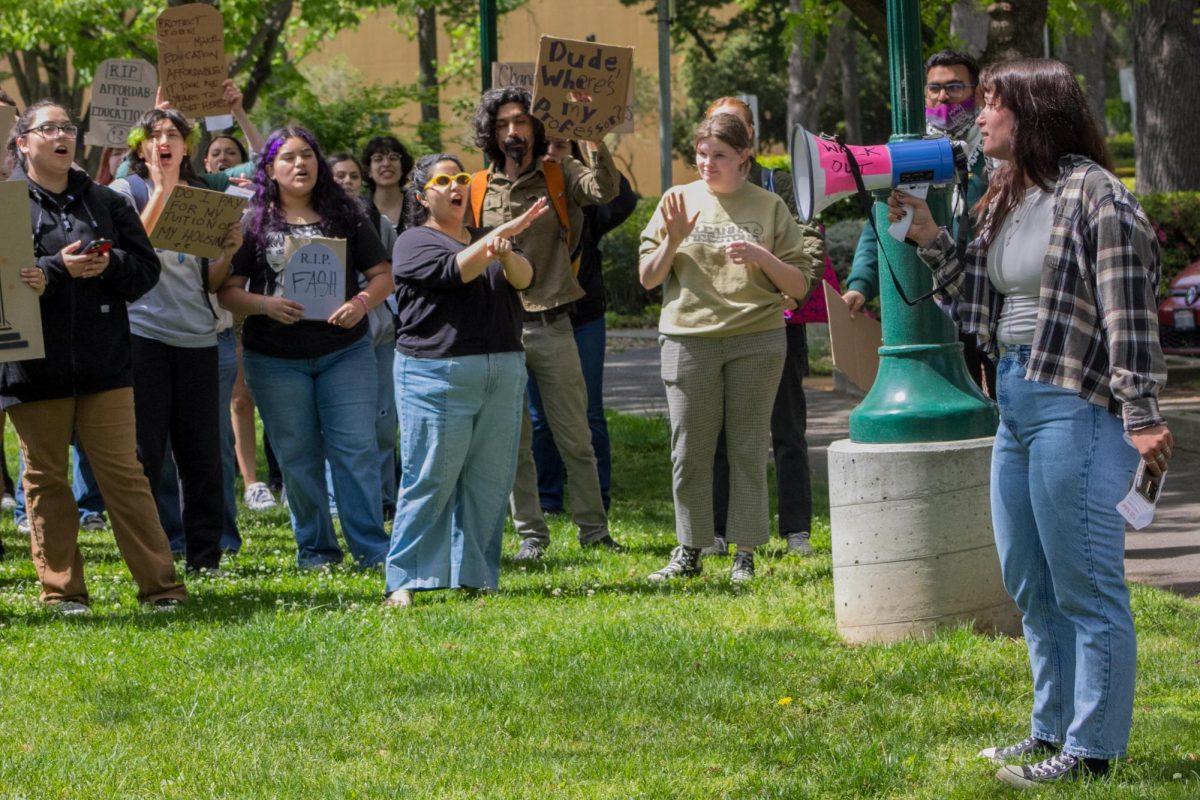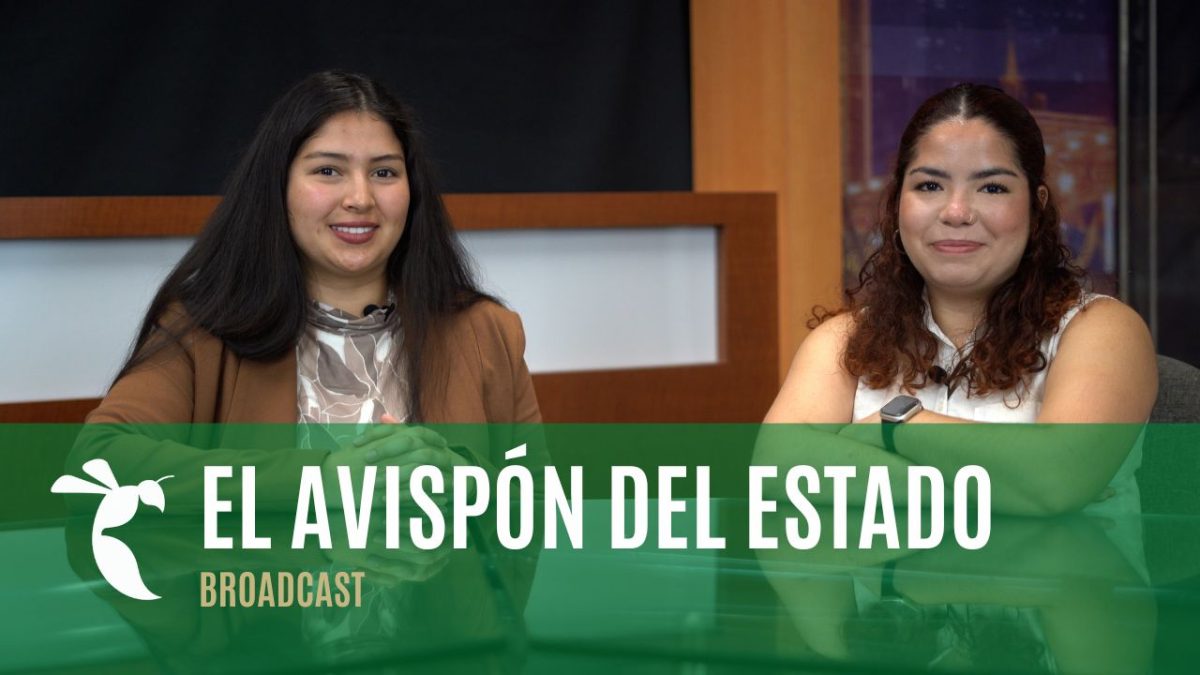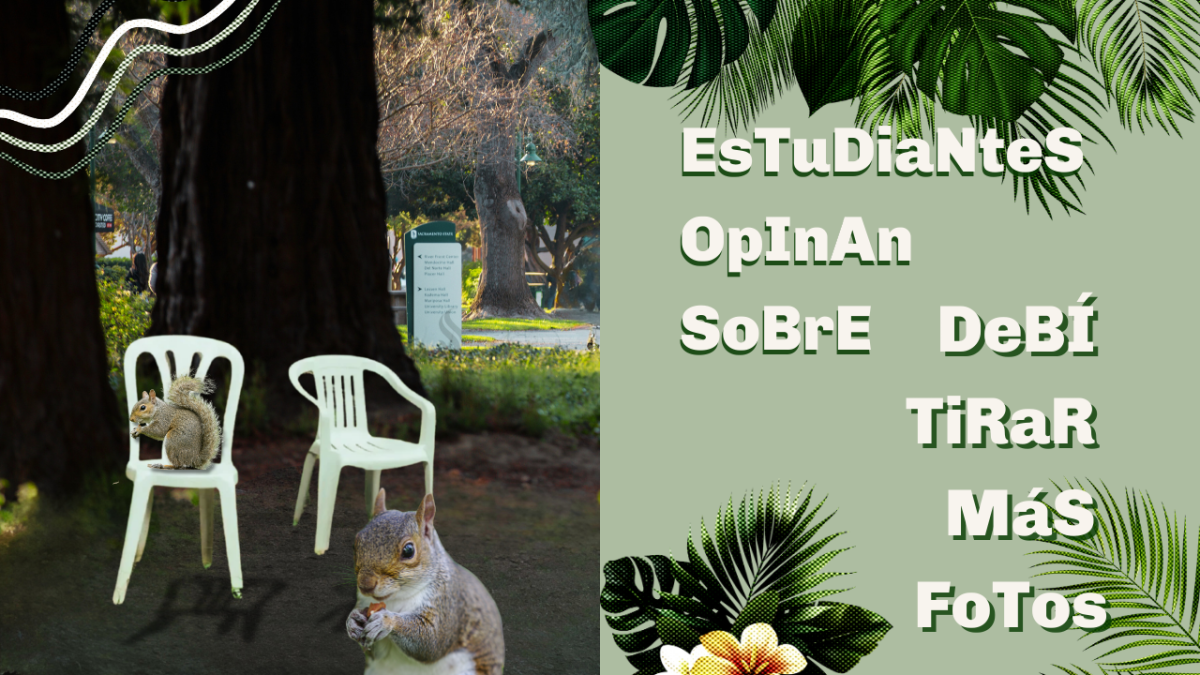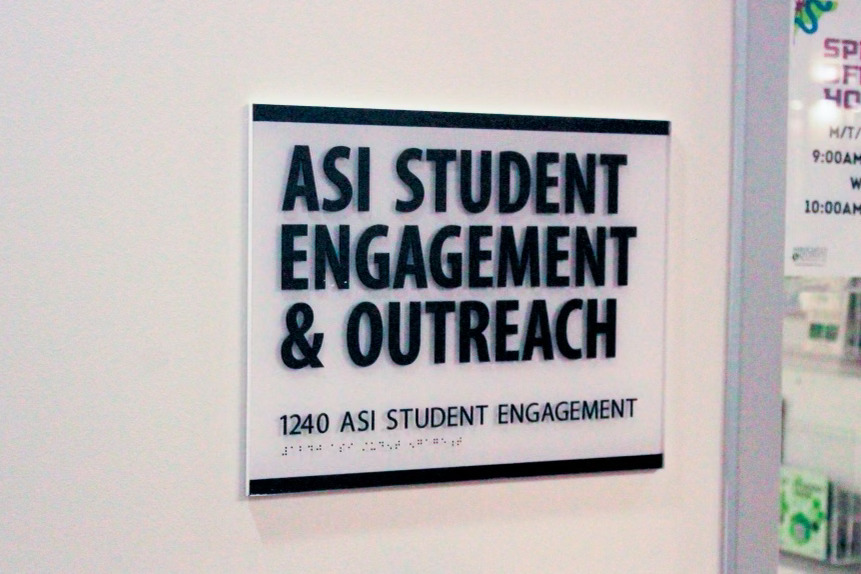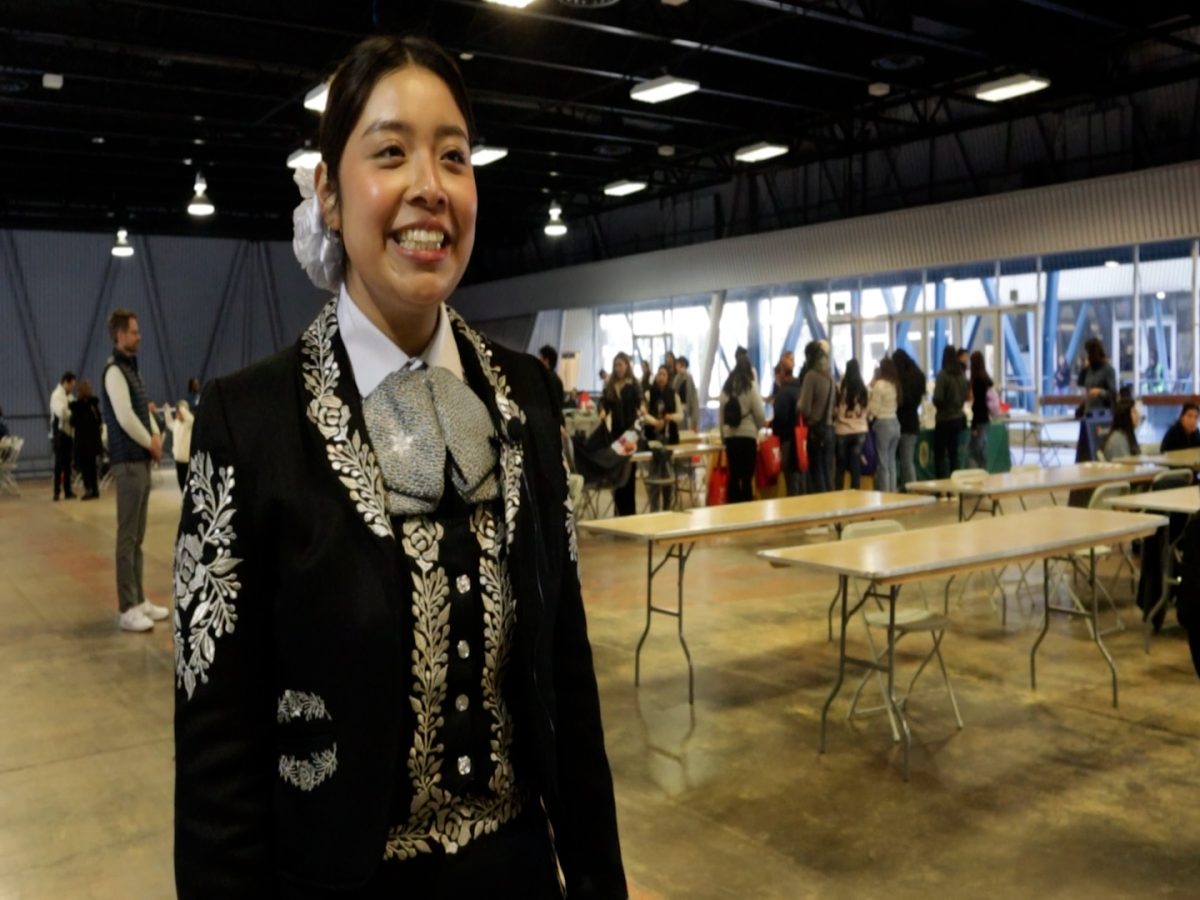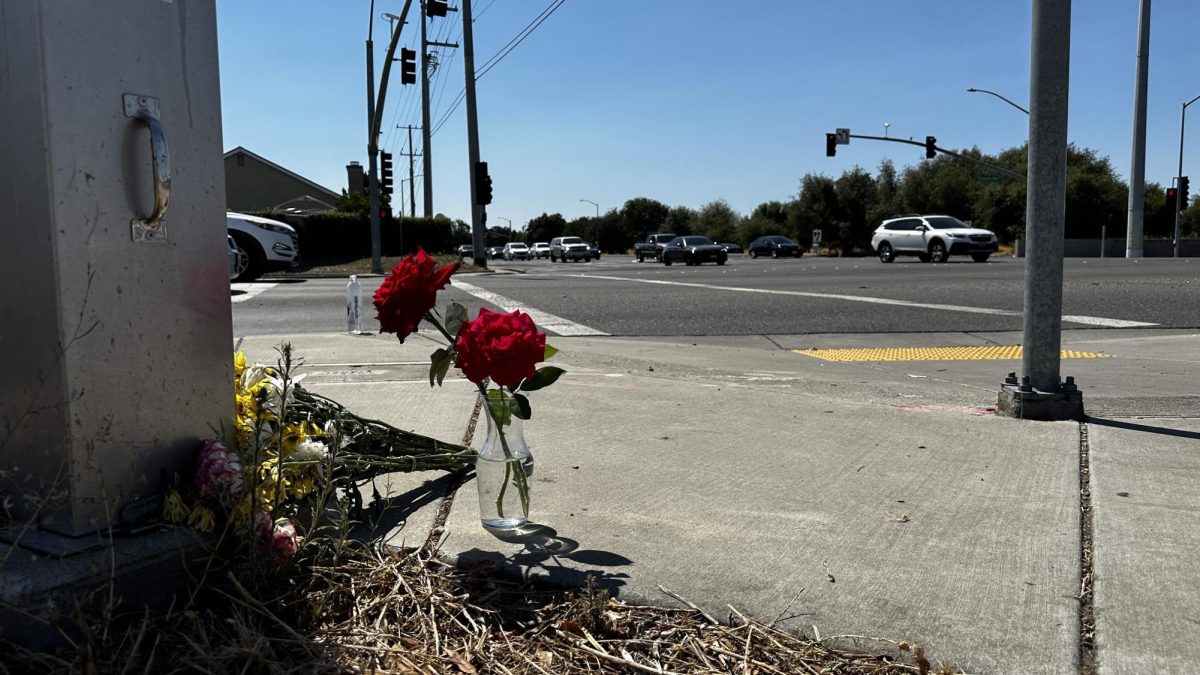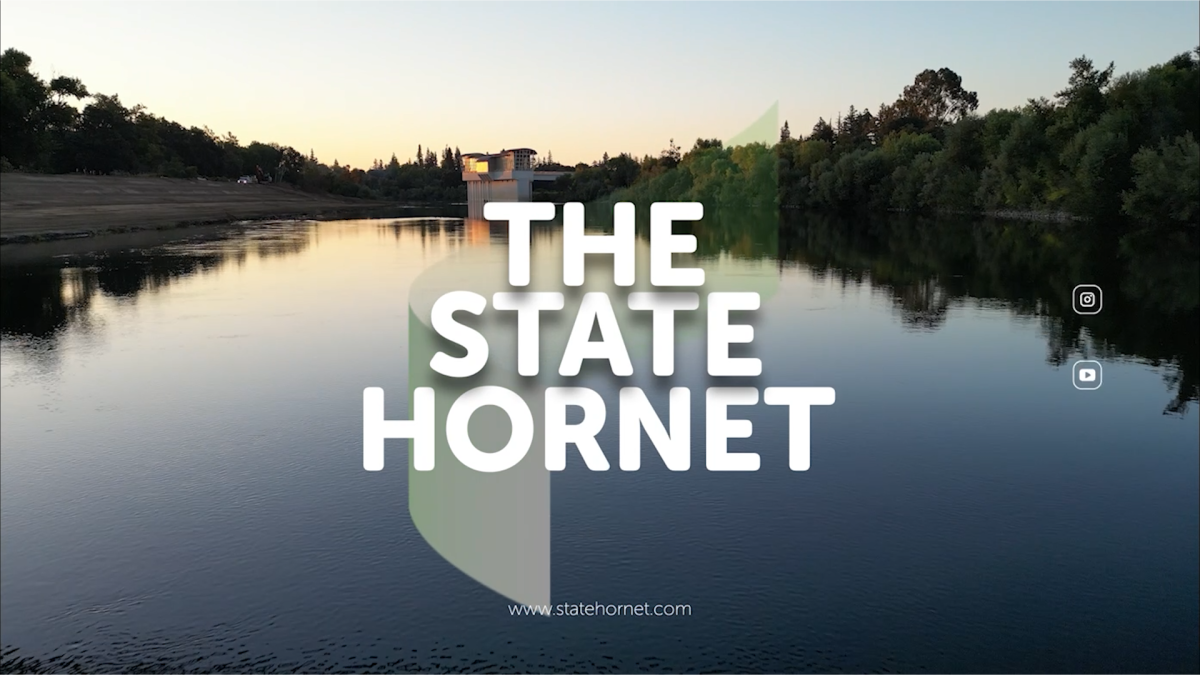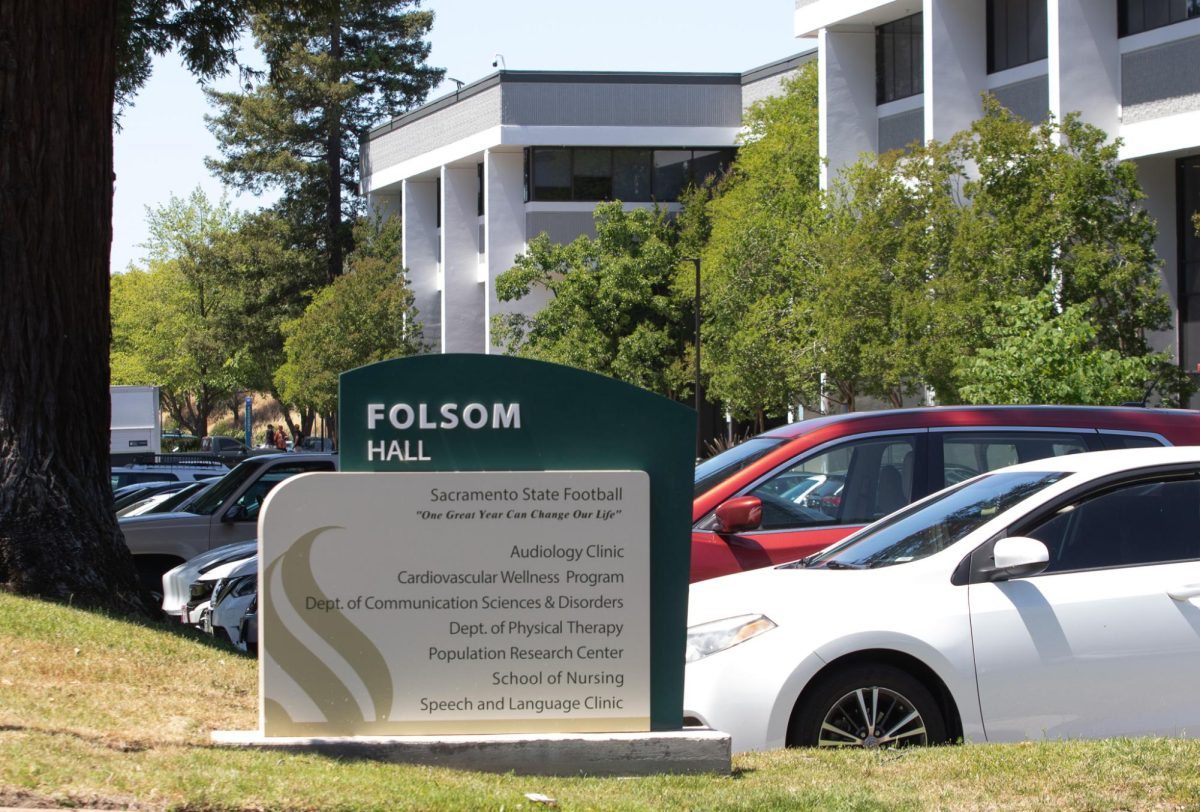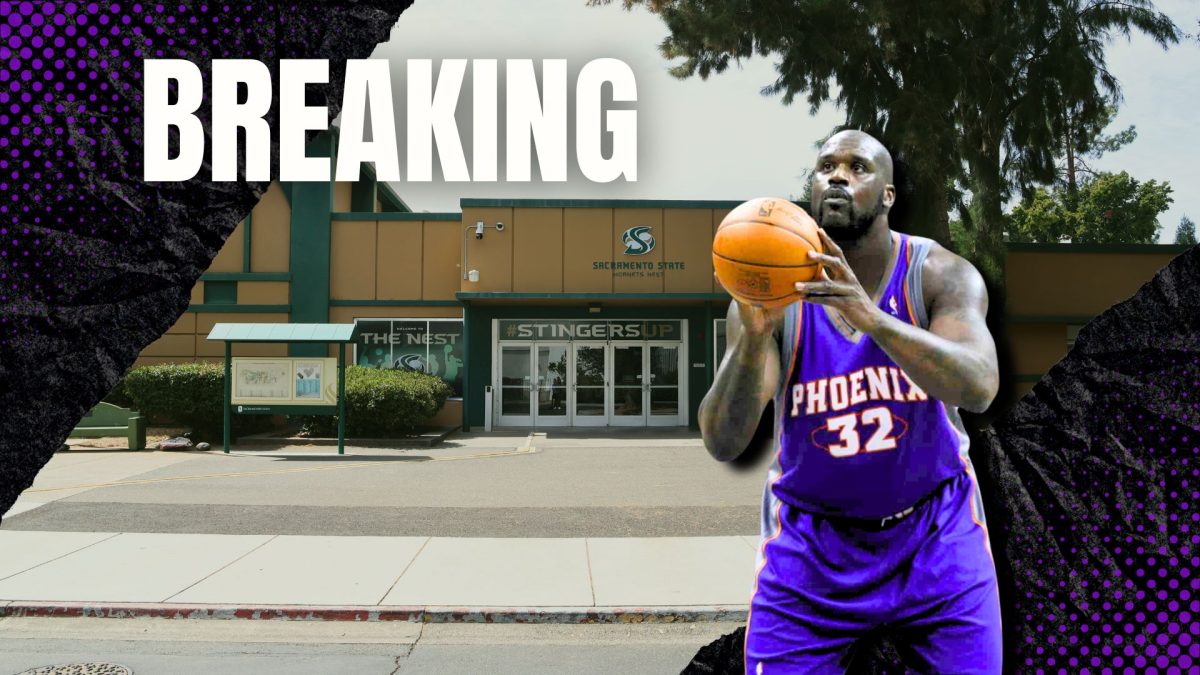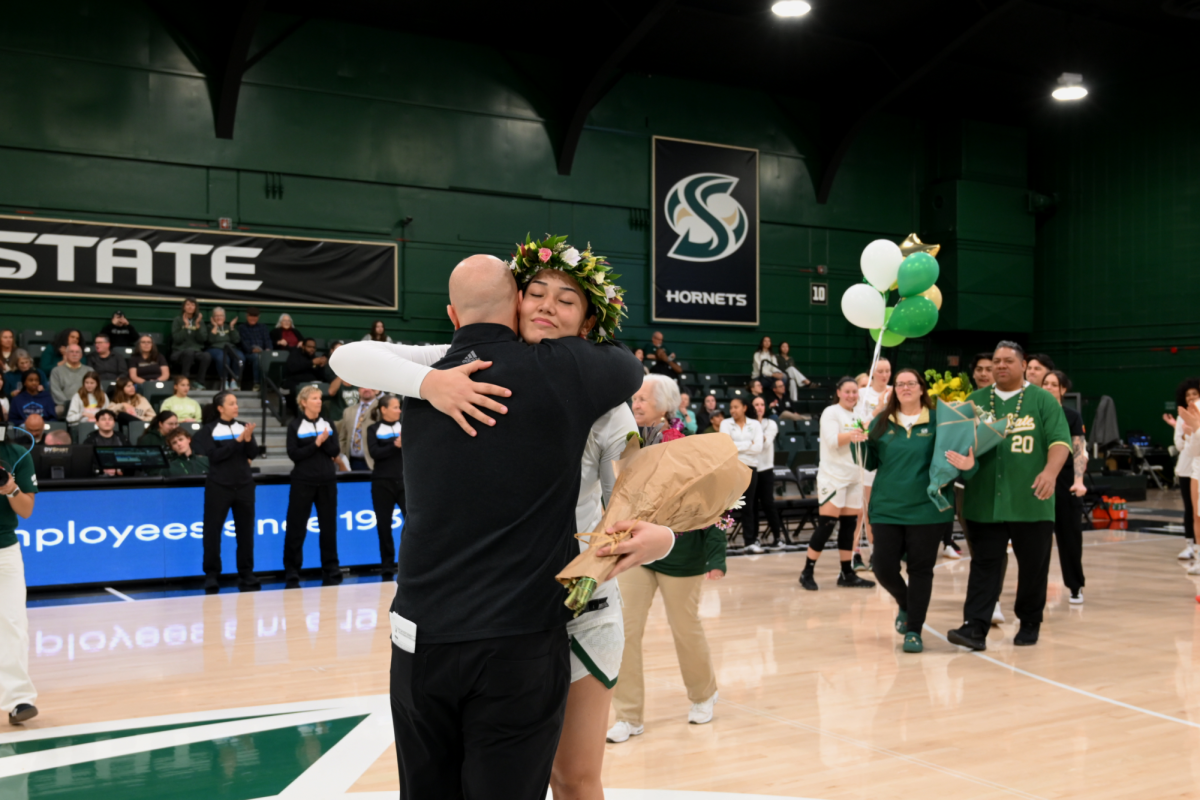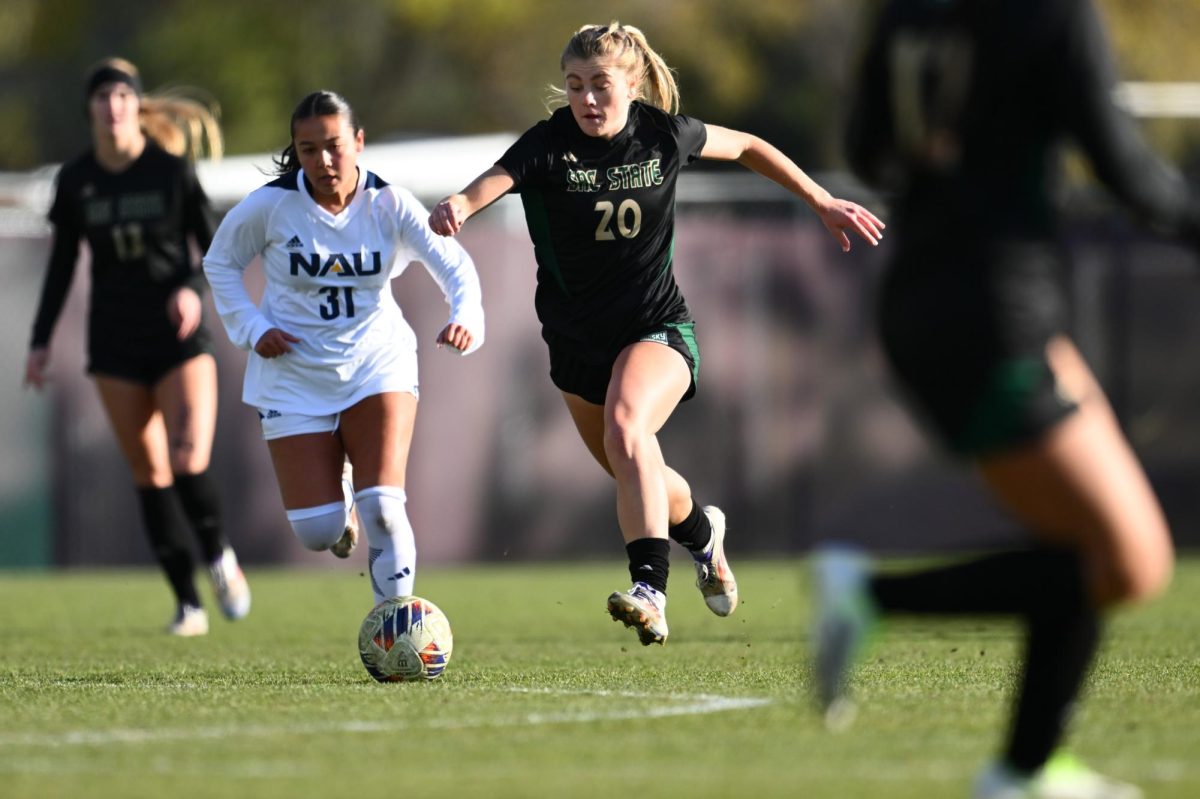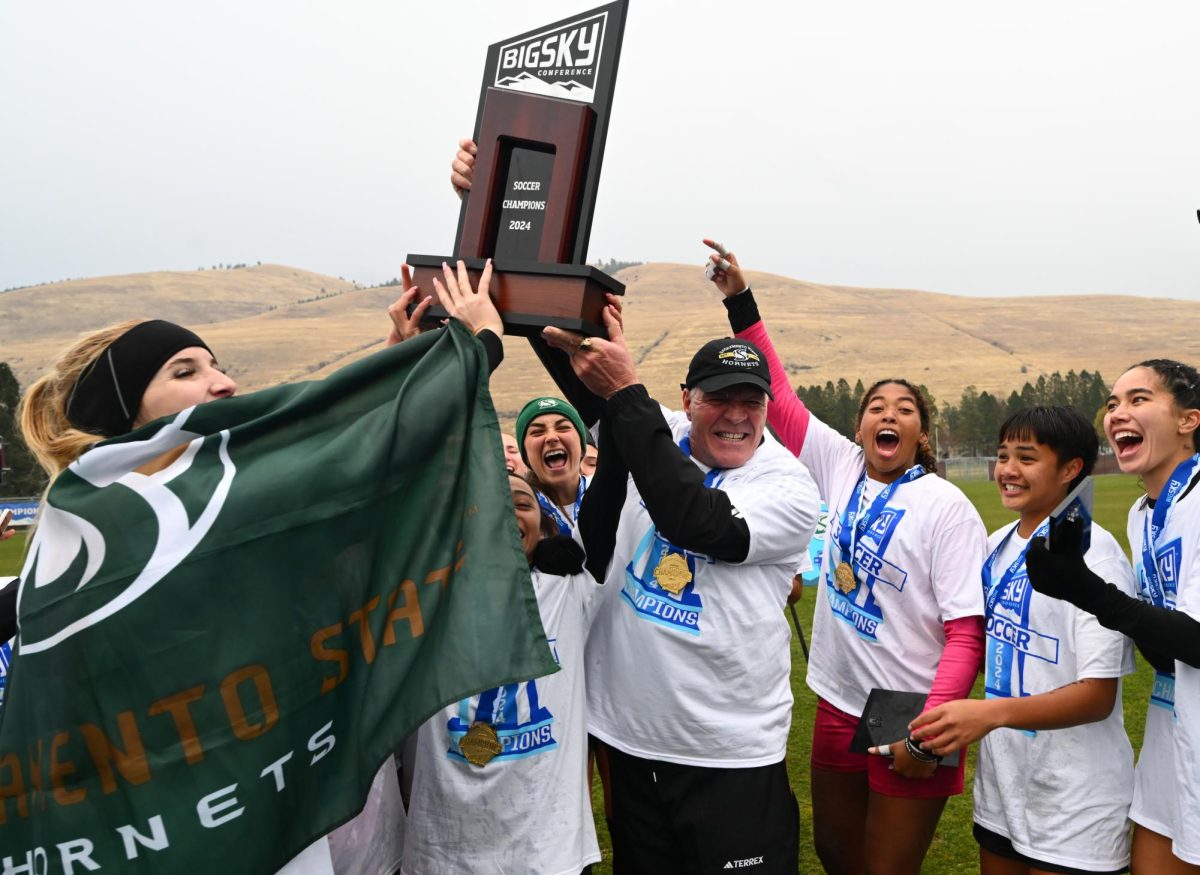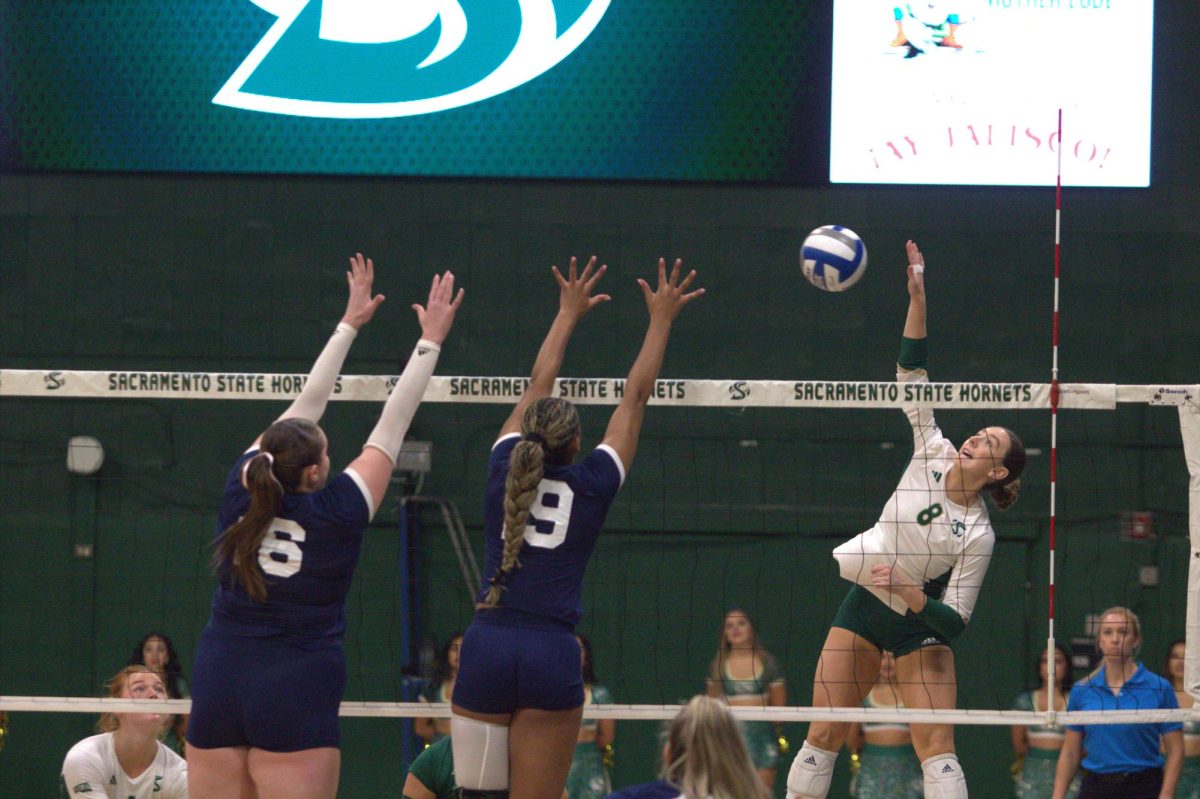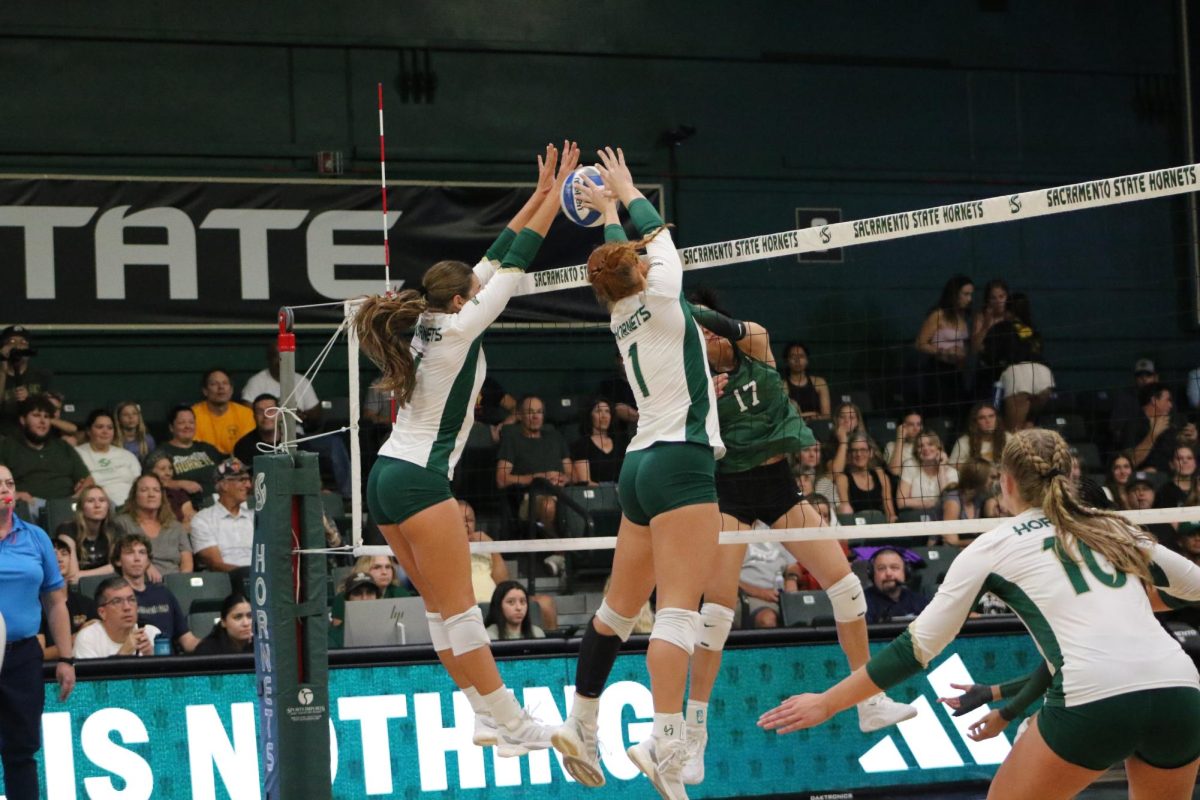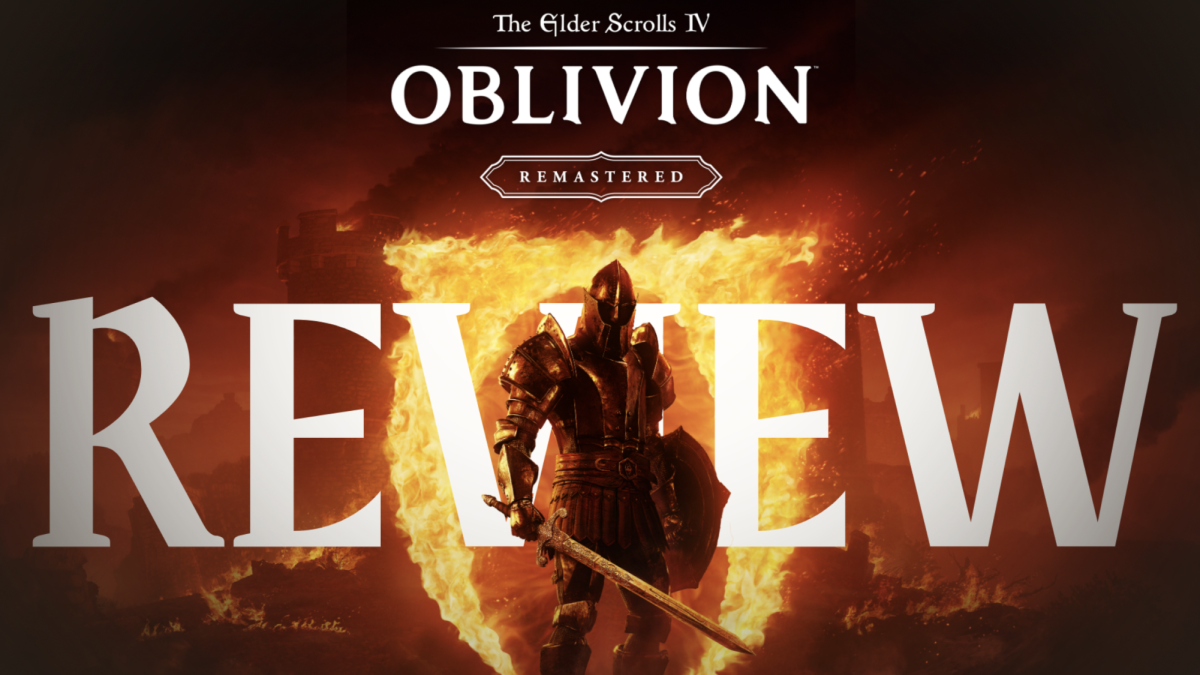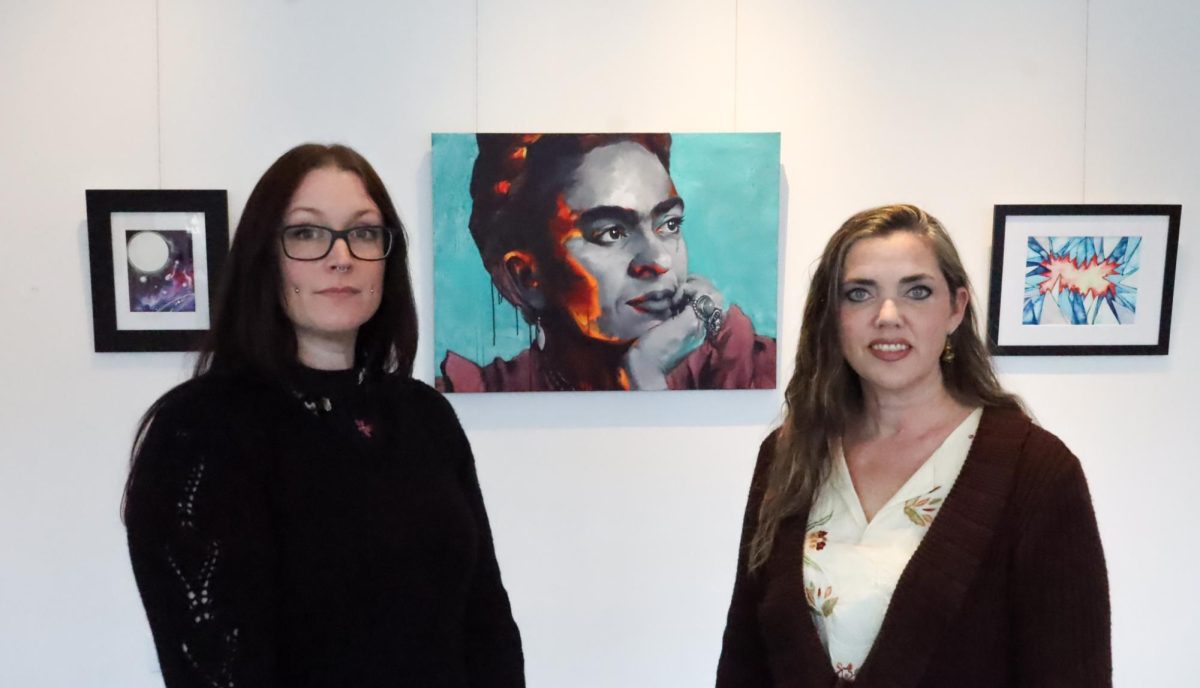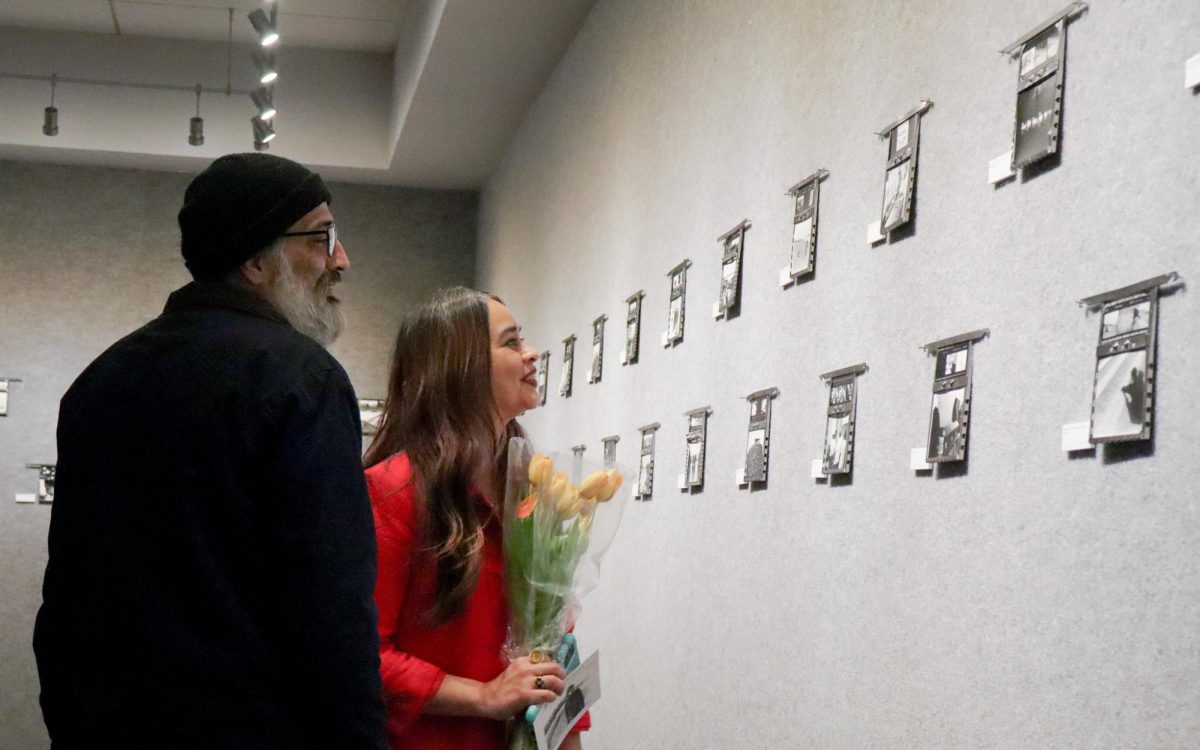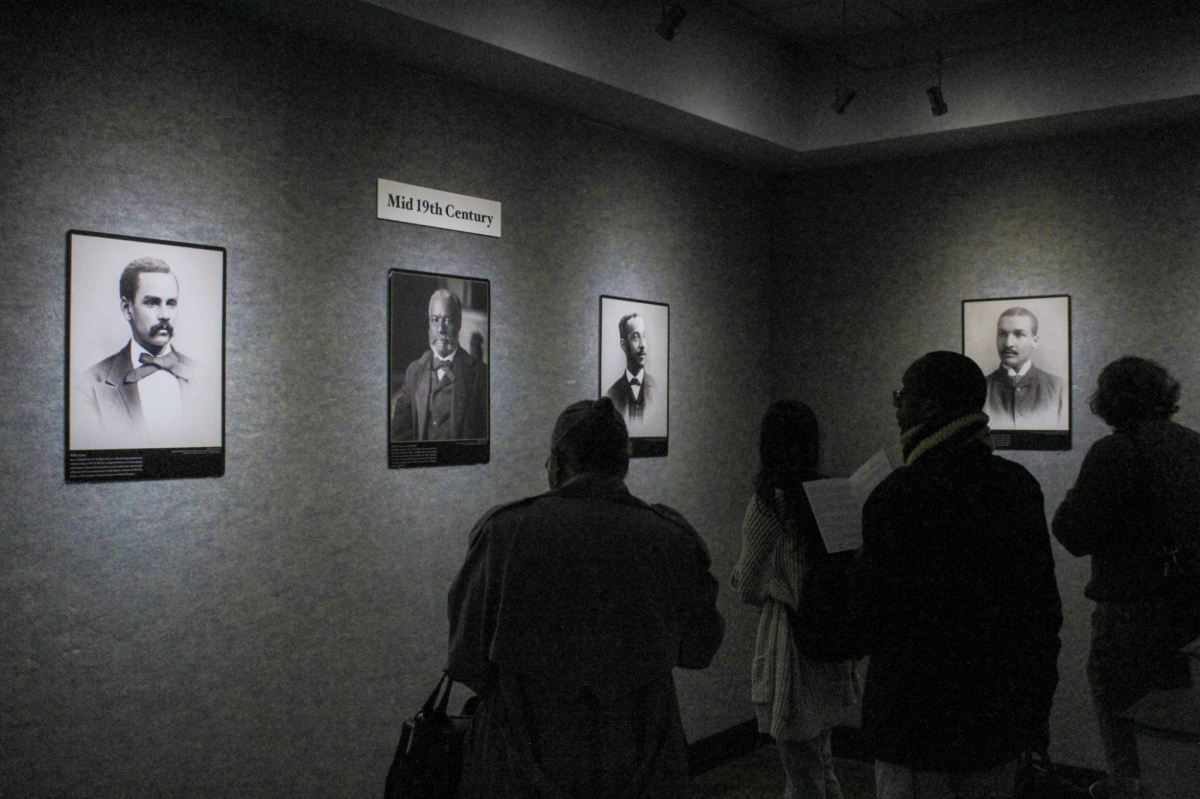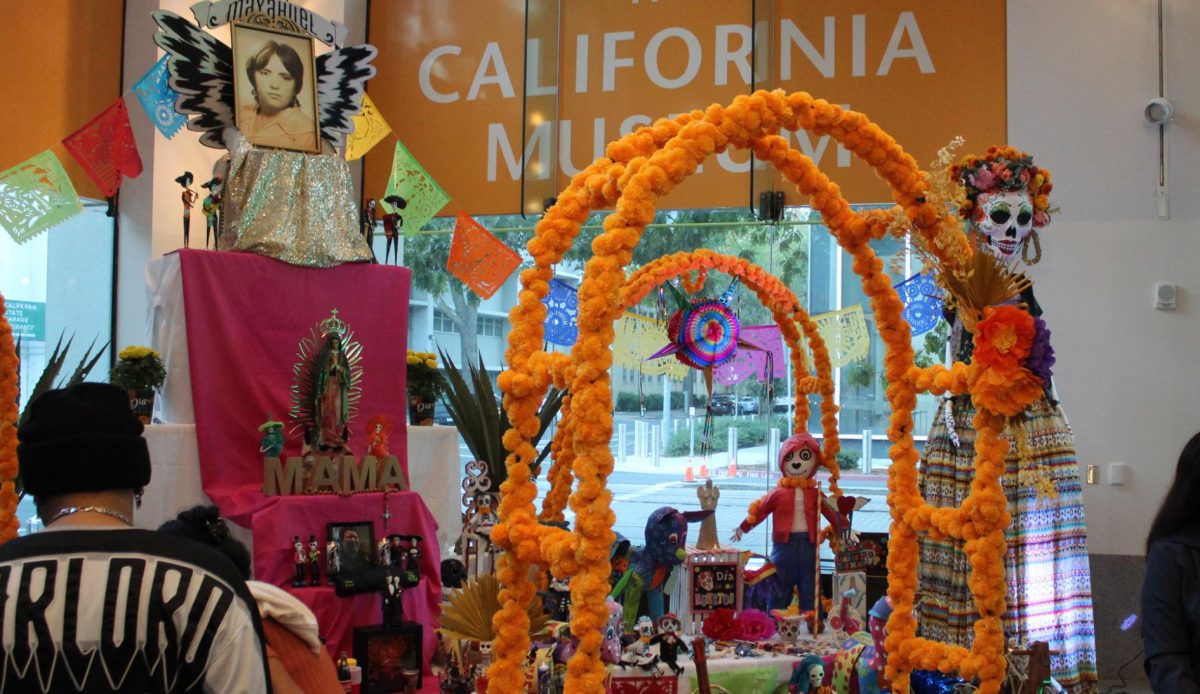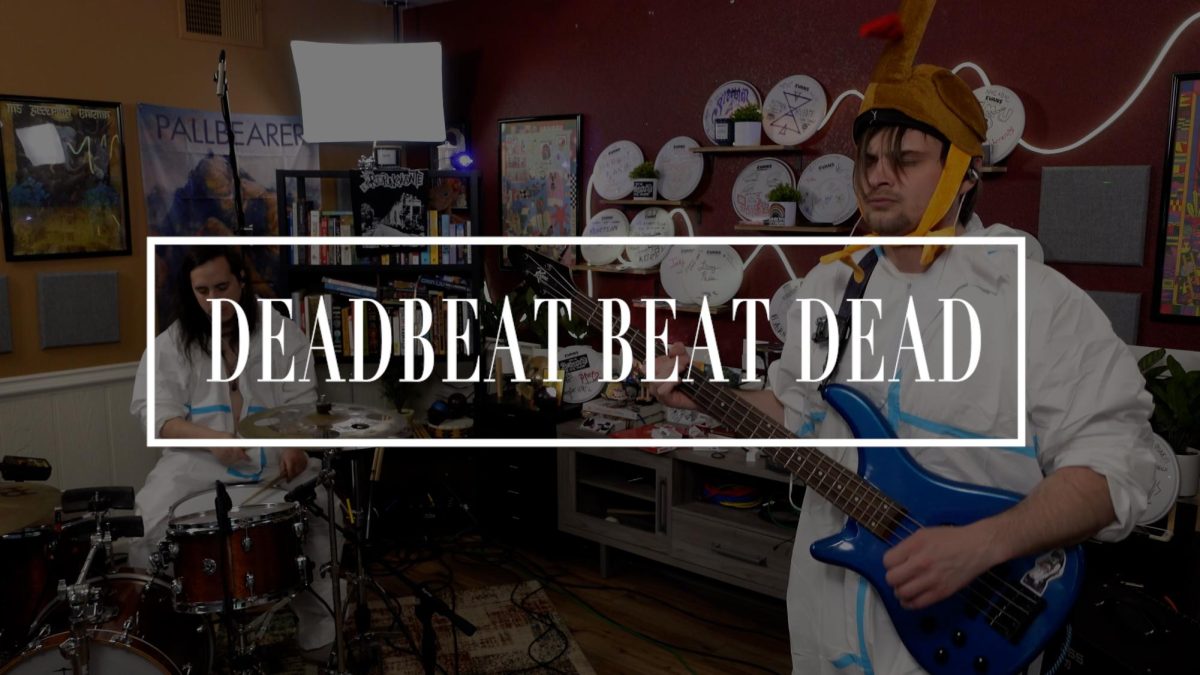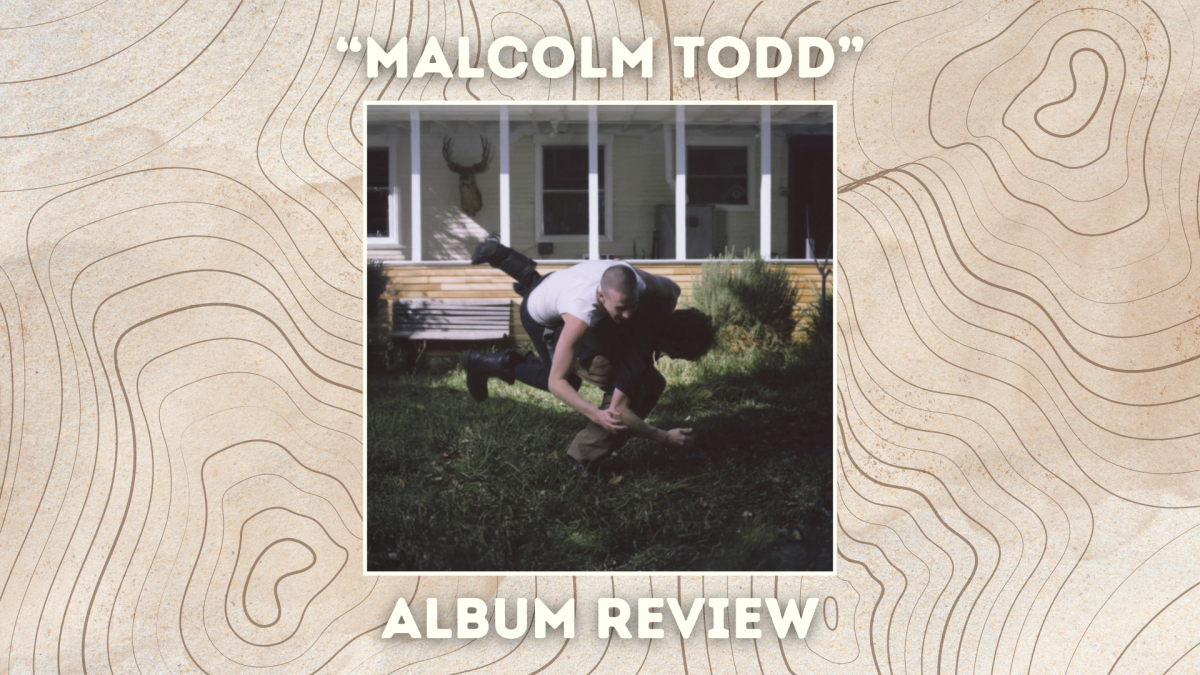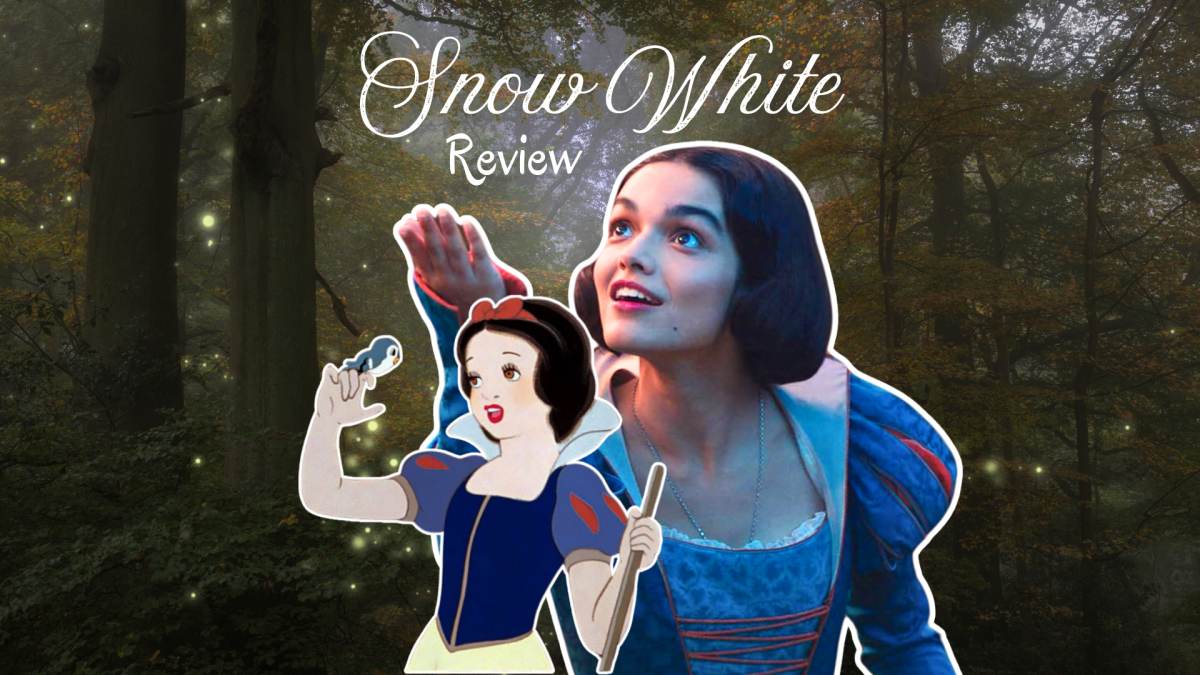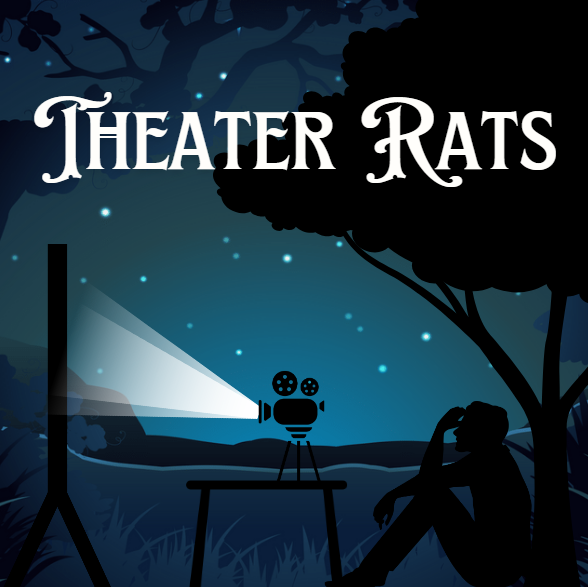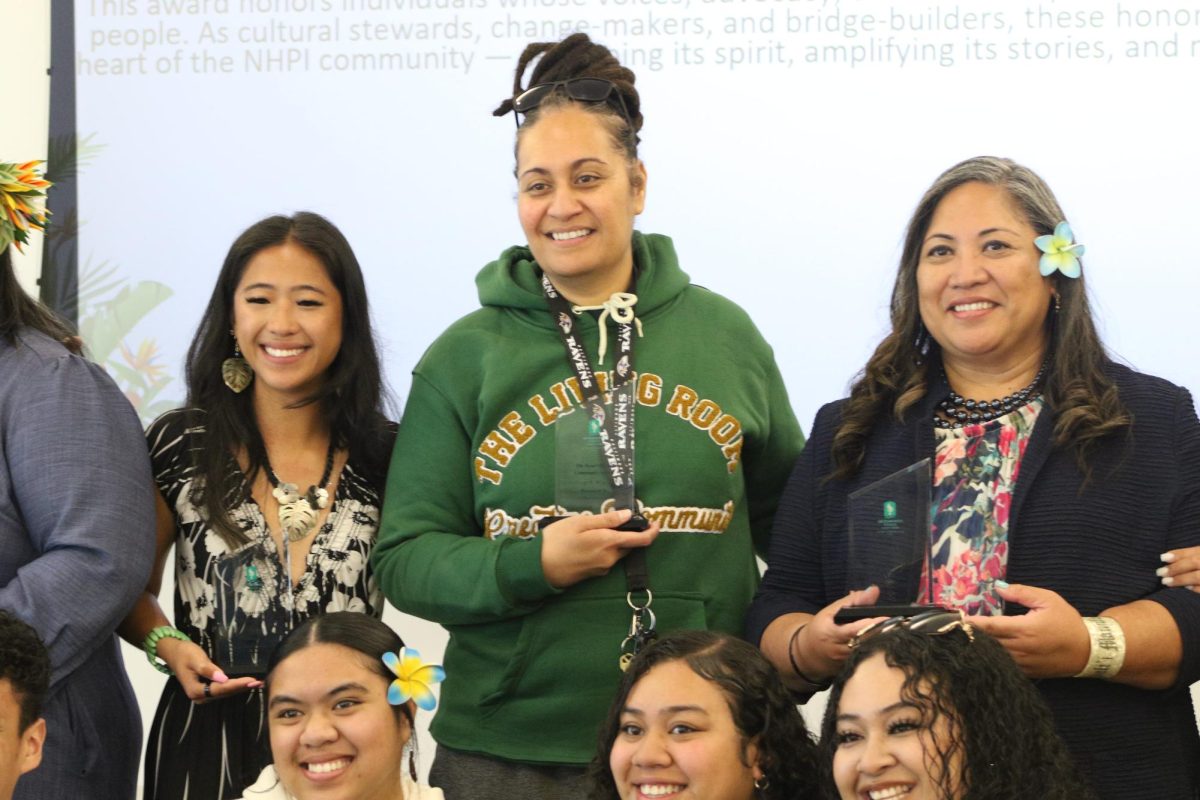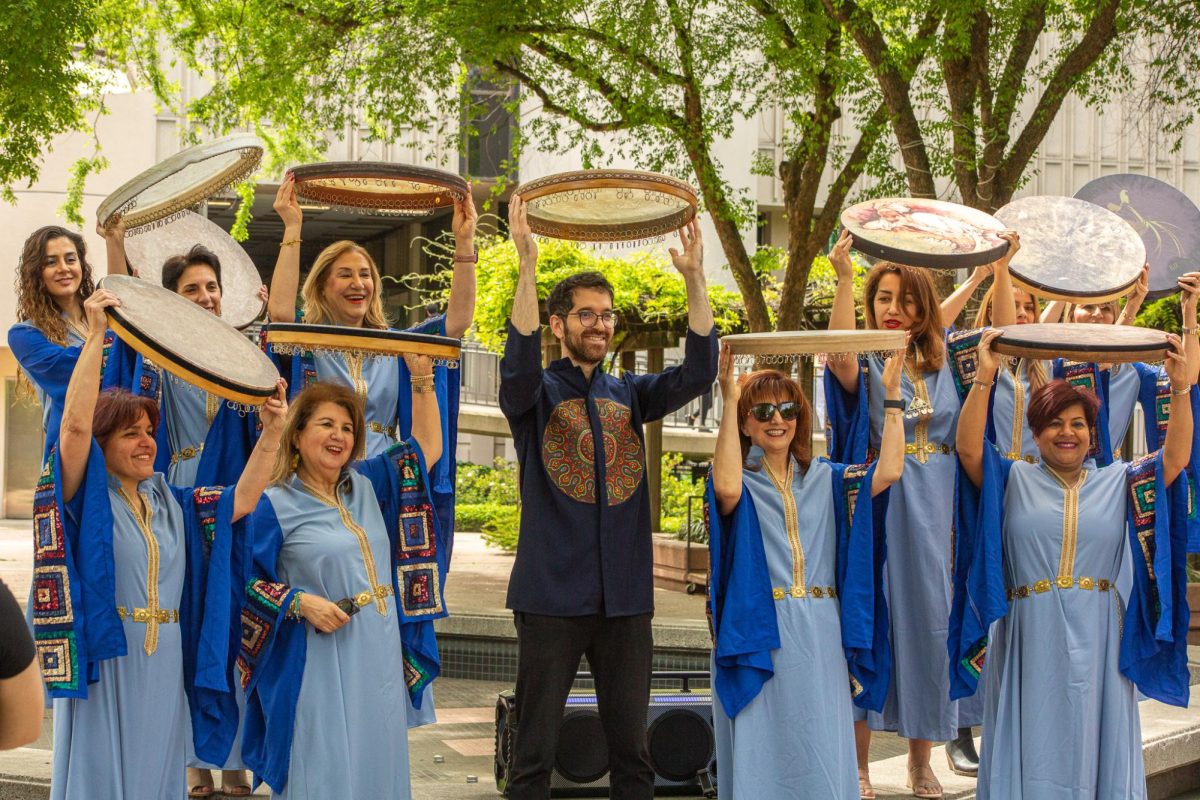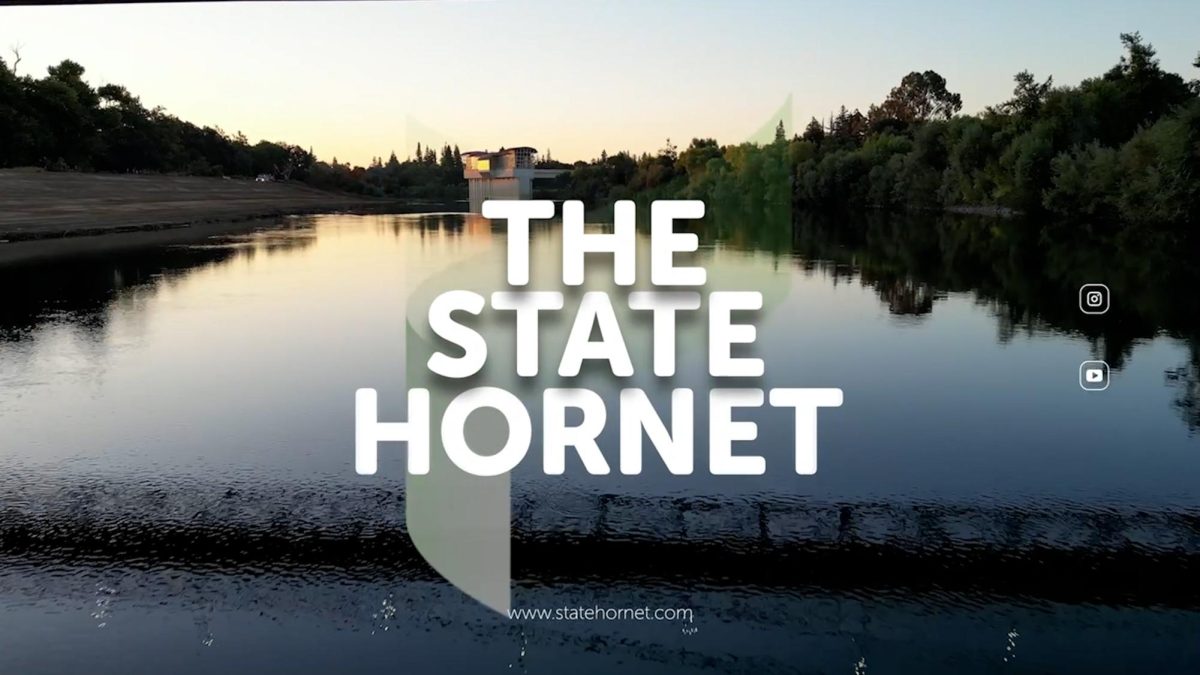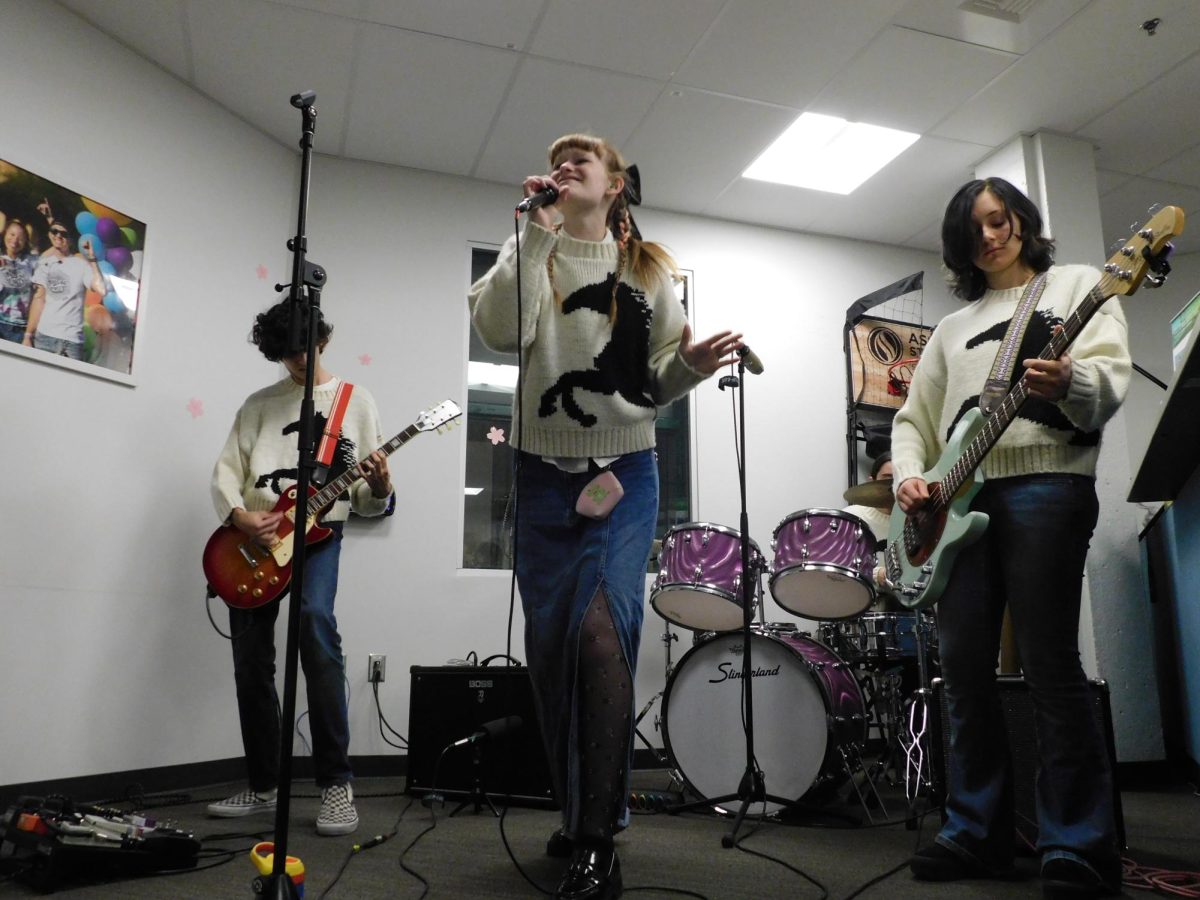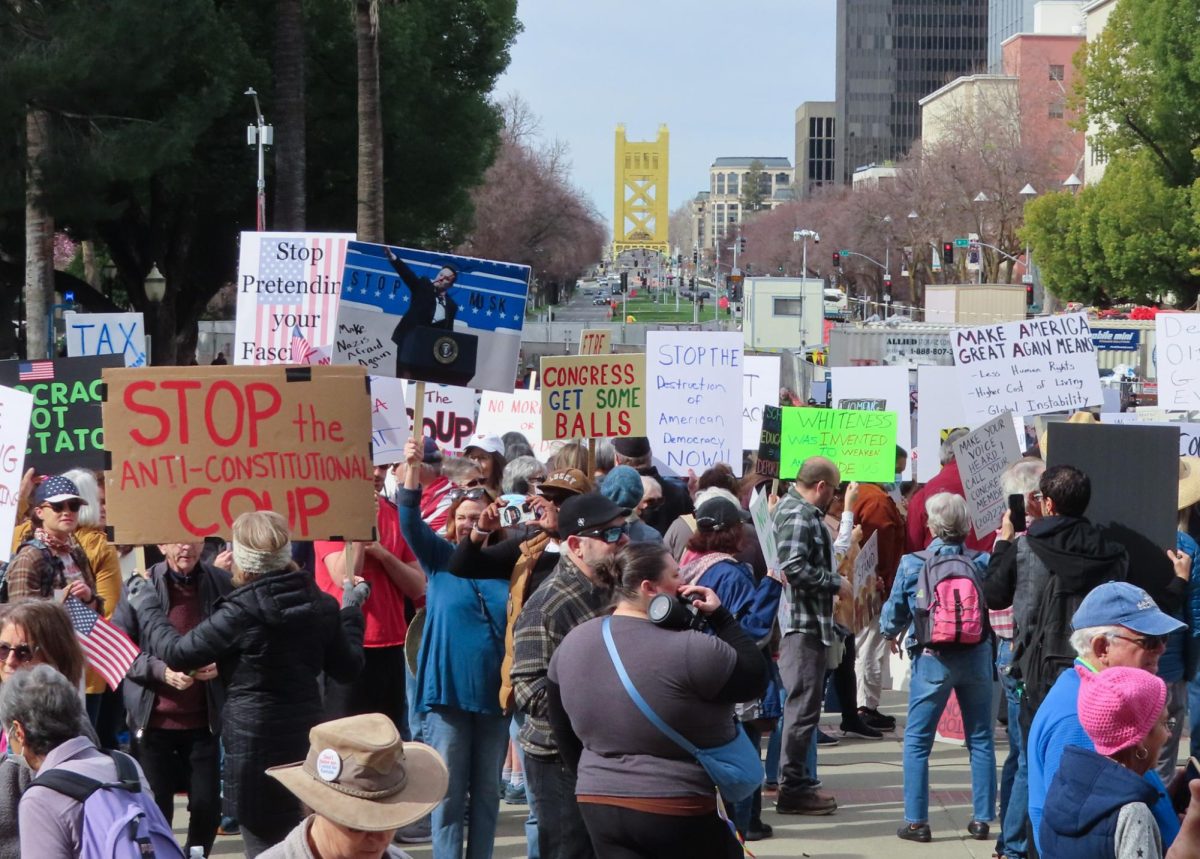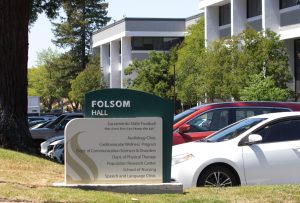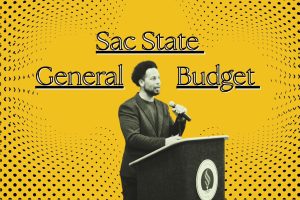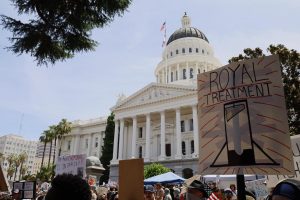3-D Technology presented in disaster lecture
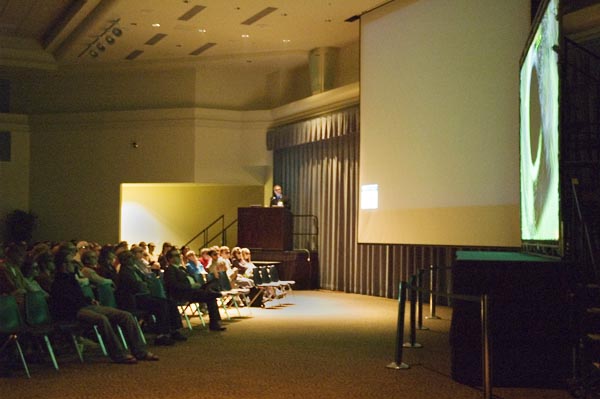
Audience members at the View the World Through Disaster Vision lecture watch Gerald Bawden’s presentation with 3-D glasses. The lecture utilized both laser and virtual reality technology to illustrate changes in the earth due to natural disasters. :
March 7, 2008
Over 300 people gathered to hear Dr. Gerald Bawden present his lecture, View the World through Disaster Vision, on Tuesday night.
The lecture is the third in a series of four and is presented by Sacramento State’s Science, Technology, Engineering and Mathematics program.
Bawden, who is a scientist for the United States Geological Survey and chief scientist of the Survey’s Western Remote Sensing and Visualization Center, introduced the audience to new technology used by scientists to better understand natural disasters.
Through the merging of two technologies, laser and virtual reality, scientists are able to scan the earth using ultra-high resolution 3-D imagery that detects changes in the ground that result from natural disasters.
Audience members wore 3-D glasses throughout the presentation, which allowed them to see how this technology tracks the changes in the ground through time.
The glasses helped show the intricate terrain of the area being studied and scanned everything from the tinniest rock to vegetation. The changes in the earth’s terrain that resulted from natural disasters were presented through data that was gathered over a period of time.
The 3-D images were color coordinated to represent each time the data was collected. This allowed the audience to see how much the earth shifted throughout the time frame in which the data was gathered.
In his presentation, Bawden demonstrated how the combined technology tracks changes in the earth from five specific types of natural disasters: landslides, debris flows, earthquakes, snowmelt and dam failures.
Bawden noted that although snowmelt is not a natural disaster, it does impact the earth as the excess water flows into meadows and creates potential problems.
Bawden and a team of scientists from the United States Geological Survey studied the 2005 Laguna Beach landslide and illustrated to the audience how much the terrain had moved as a result.
“We are able to create an incredible archive of what this landslide looks like,” Bawden said in his presentation.
Through the data that was collected from the Laguna Beach landslide, Bawden said the new technology will help them learn exactly what happened during the landslide.
Bawden also used the technology to illustrate the changes in the Ka Loko reservoir that resulted from the dam breach on March 14, 2006 in Kilauea, Hawaii that killed seven people. The United States Geological Survey, along with Bawden were able to gather some information about the breach, although the reason why it occurred is still unknown.
“We can’t tell if the dam overtopped or failed, we ended up having a complex breach pattern,” Bawden said.
Using the technology, they were able to learn that the reservoir had drained about 90 percent of its water before there was a pause.
During this initial flow, they were able to discern that 341 million gallons of water spilled out of the reservoir. After the pause, another 34 million gallons came out bringing the total to an estimated 375 million gallons of water that rushed out of the reservoir due to the breach.
Bawden wrapped up his presentation by showing the audience how the scientists were able to see the changes in the earth due to debris flows and the also through the amount of water that results from snowmelts.
The lecture presented by Bawden, who is also an adjunct professor at Sac State and helps guide research on campus, drew a large audience that filled the University Union Ballroom and was said to have had the largest turnout for a STEM lecture series to date.
Many students came to watch the Disaster lecture including Sierra Community College student Amy Bower, who learned of the event through a friend. Although she is a psychology major, Bower came out to see the lecture because she thought it would be appealing.
“I was interested in a 3-D lecture and what he had to say about natural occurrence, Bower said, “It was impressive as far as what technology they used.”
Robin Wham, who is a teacher’s assistant in the geology department at Sac State, also came out to see the lecture and support the Science, Technology, Engineering and Mathematics program.
“I thought the imagery and technology are cutting edge and there is a lot to be seen in the future using this technology,” said Wham. “He took something that was extraordinarily complex and presented it in a way for us to understand.”
There was only one thing that Wham would like to see in future lectures by the United States Geological Survey.
“I’d like to see it [the technology] used in a volcano,” Wham said.
When asked, Bawden said he planned to study the Mauna Loa volcanic activity when he was in Hawaii gathering data on the Ka Loko reservoir breach, but could not do so due to instrument failure. Bawden said he will return to Hawaii in the near future to study the active volcano.
Isela Reyes can be reached at [email protected].



